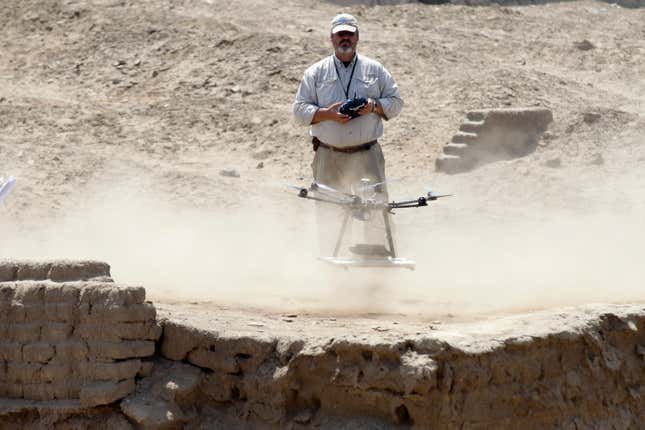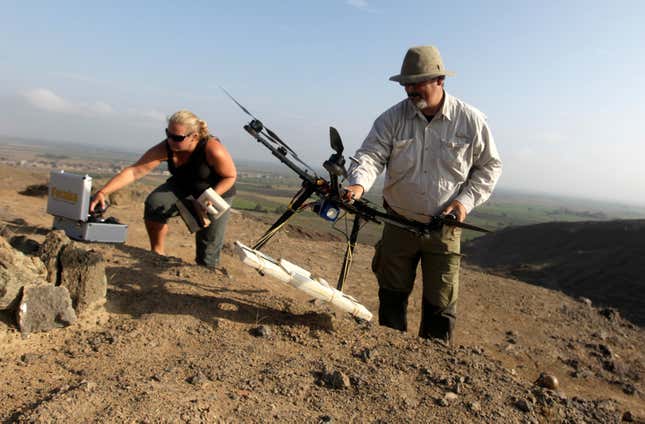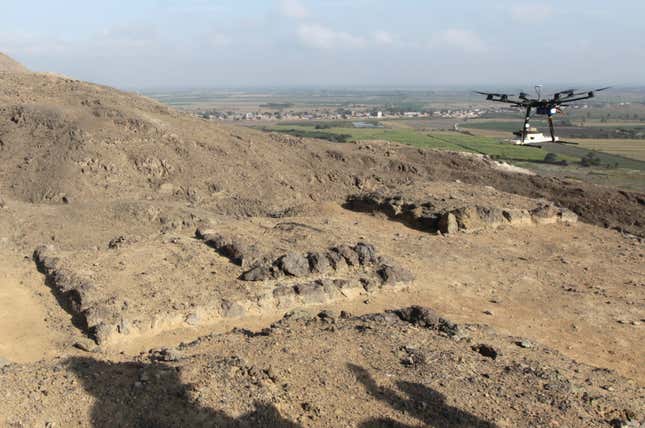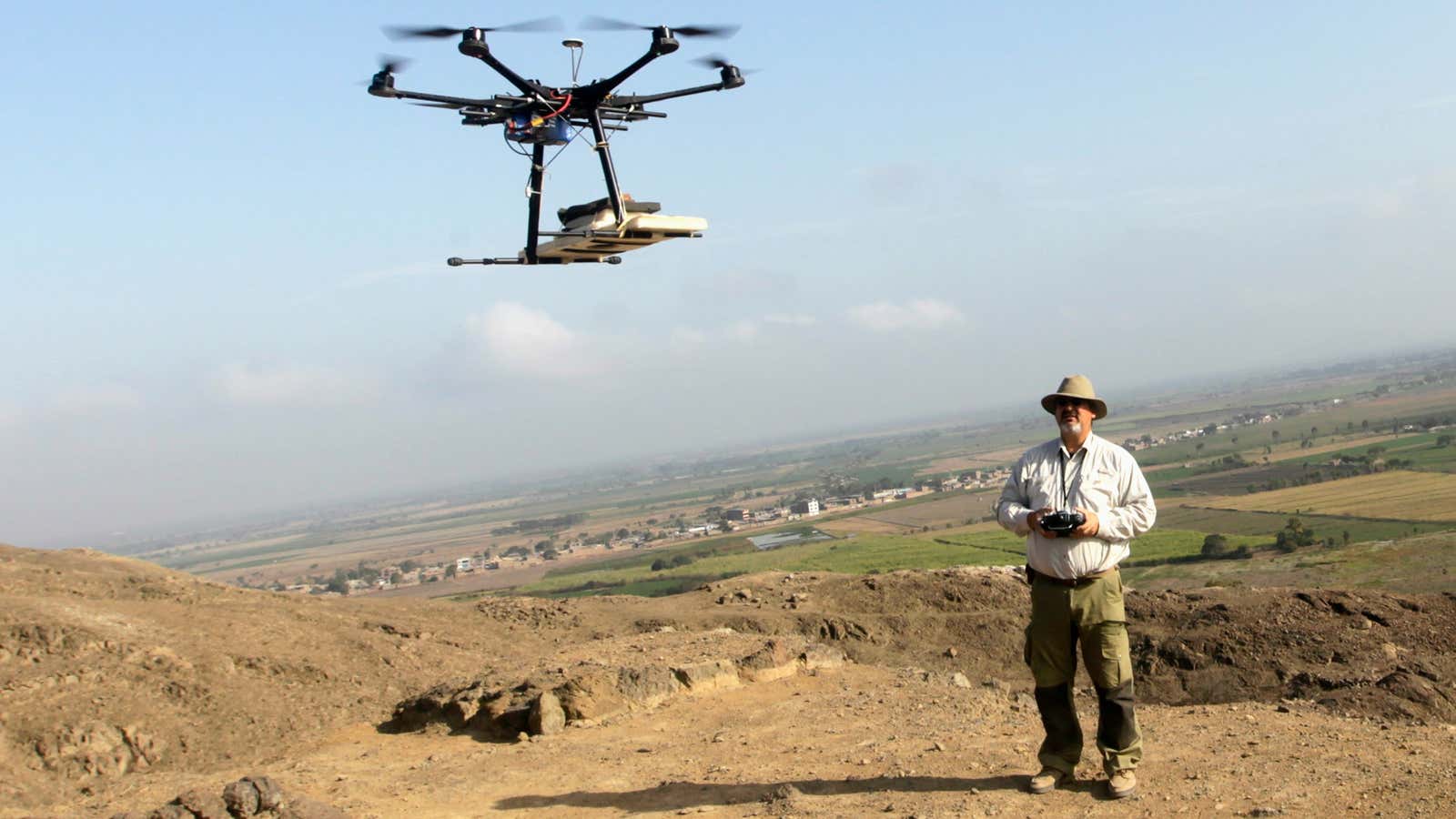Here’s another non-violent use of drones: Archaeological preservation.
Following the trend of using drones for animal and land conservation purposes, archaeologists in Peru are using drones to protect the country’s ancient ruins.
Between 2002 and 2012, Peru’s GDP grew at 6.4%, largely driven by exports. Amid this growth, archaeological efforts took a backseat to mining and manufacturing. And with a meager $5 million budget, it’s hard for Peru’s Culture Ministry to protect thousands of sites. The government told Reuters that out of 13,000 sites, only about 2,500 have been properly marked off, making it easy for the balance to be illegally occupied or destroyed for other uses.
Not only do they protect archaeological sites from squatters, builders and illegal miners, but drones also speed up the survey and mapping of sites; it can reduce a project from months and years to days and weeks.
With the cost of drones, or Unmanned Aerial Vehicle (UAVs), falling—thanks in part to the open source nature of drone software such as DIYdrones.com—archaeologists in Peru can make up for limited resources using drones.



